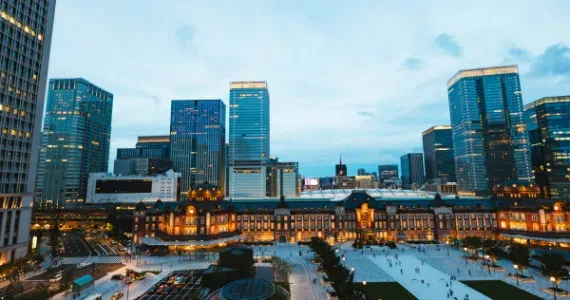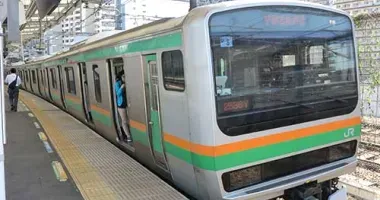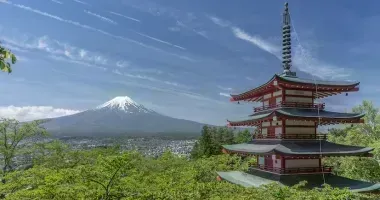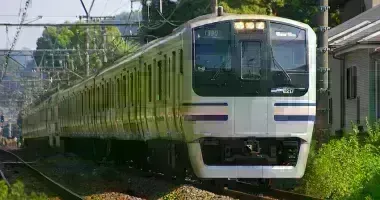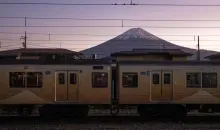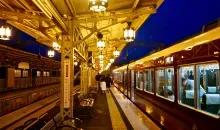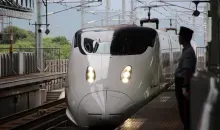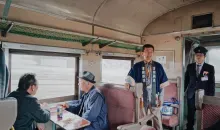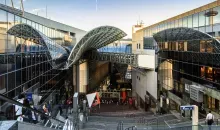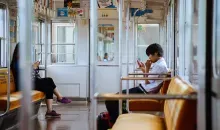Tokyo Metro Marunouchi Line: A Comprehensive Guide
The Marunouchi Line is the second oldest subway line in Tokyo, operated by Tokyo Metro. It runs in a U-shape from Ogikubo to Ikebukuro, with a branch line to Hōnanchō. Known for its crowded conditions and unique above-ground sections in central Tokyo, the Marunouchi Line is an essential part of the city's transportation network.
Route and stations
The Marunouchi Line's main route stretches 24.2 km from Ogikubo to Ikebukuro, with a 3.2 km branch line from Nakano-Sakaue to Hōnanchō. The line serves a total of 28 stations, including major transfer points such as Shinjuku, Marunouchi, and Ikebukuro Station.
Notable above-ground sections can be found at Yotsuya, Ochanomizu Station, and Myōgadani, offering passengers a unique view of Tokyo's urban landscape. Can you imagine riding a subway train and suddenly emerging above ground in the middle of the city?




Trains and operation
The main line is served by 6-car Tokyo Metro 02 series EMUs, while the Hōnanchō branch uses 3-car trains (with some 6-car trains during peak hours). The Marunouchi Line once boasted the most frequent service in Tokyo, with trains running at impressive 1 min 50 sec intervals.
To enhance safety, the line has introduced platform doors and automated operation. A gradual replacement of the current rolling stock by the new Tokyo Metro 2000 series is planned from 2019 onwards, promising a more comfortable and efficient ride for passengers.
History and development
The Marunouchi Line has a storied history dating back to 1925 when it was first planned. Construction started in 1942 but was halted during World War II. The first section between Ikebukuro and Ochanomizu opened in 1954, with gradual extensions completing the line by 1962.
Tragically, the line was targeted in the 1995 sarin gas attack by the Aum Shinrikyo cult, a dark chapter in its history. In 2004, the line was inherited by Tokyo Metro after the privatization of the Teito Rapid Transit Authority.
Ridership and overcrowding
The Marunouchi Line is one of the most crowded lines in Tokyo, with a staggering 169% capacity between Shin-ōtsuka and Myōgadani during rush hour. It carries over 1.1 million passengers daily. Imagine being packed into a train car so tightly that you can barely move!
Efforts to mitigate the crowding include increasing train frequency and installing platform doors. However, the line's popularity and Tokyo's dense population make overcrowding an ongoing challenge.
Future plans
Looking ahead, Tokyo Metro plans to introduce CBTC signaling and new rolling stock to improve the Marunouchi Line's efficiency and comfort. Platform extensions are also in the works to allow through-services from Ikebukuro to the Hōnanchō branch.
These upgrades aim to keep the line running smoothly as Tokyo continues to grow and evolve. Exciting times are ahead for this historic subway line!
Travel tips
- Expect extreme crowding during rush hours, so plan your trips accordingly if possible.
- Keep an eye out for the unique above-ground sections when traveling on the Marunouchi Line - they offer a brief but fascinating glimpse of the city.
- Check last train times for connections, as the line is not through-serviced and you don't want to miss your ride home!
- Consider using a pre-paid travel card like Tokyo Subway Tickets or an IC card for smooth travel. Do I need a PASMO card?
- Be aware of public holidays when trains may be extra crowded or run on reduced schedules.
- If you miss the last subway, don't panic! There are plenty of ways to spend the night in Tokyo until trains start running again in the early morning.
The Marunouchi Line is a vital part of getting around Tokyo. With a little know-how and some strategic planning, you can navigate this bustling subway like a pro. So hop aboard, enjoy the ride, and explore all that Tokyo has to offer along the way!
For more subway adventures, check out our guide to Discover Tokyo Station or book a guided Tokyo Discovery, full day tour.
Happy travels!
More Travel Tips


